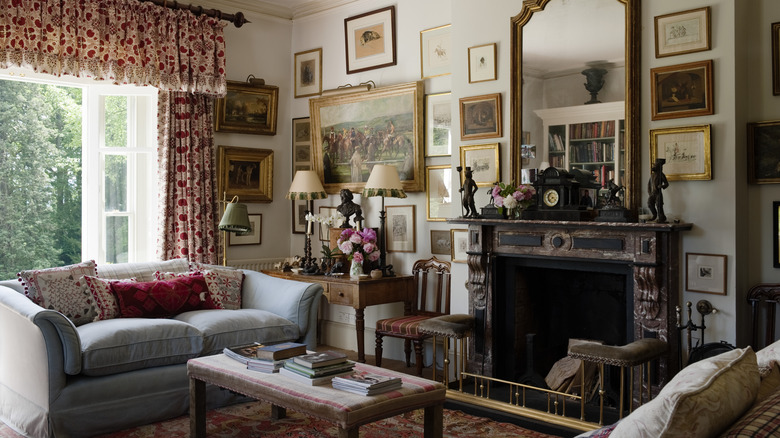Why You Should Never Underestimate The Power Of Adding Antiques To A Room
There are so many reasons to add an antique to a room. Furniture and other home accents made at least a century ago are built to last. A chair, hutch, bookcase, table, or armoire, for instance, will be made of solid wood, not a composite material. Construction techniques of yesteryear often valued strength and durability, with joinery that relied upon craftsmanship rather than assembly-line glue or staples. There's also the unique value. A 19th-century wooden ice chest, for example, is probably not something you'll see in your neighbor's home. There's oftentimes a story behind every piece, better understood if there's any documentation as to its purpose, maker, or former owner. Patina, imperfections, and character can add style, and that's especially the case if you're going for a certain look, such as the classic English house. Overall, never underestimate how much of an impact a few antique pieces can make in your space. They bring a personalized and lived-in feel that's hard to replicate.
Nowadays, there's a good chance you can score certain antiques for an unheard-of price. Some pieces are plunging in value, including pianos and mantel clocks. You'll definitely want to know the designer names when buying antique furniture. When successfully buying antique furniture for your home, you should take those market forces into account with good research and eager preparation. Many want a good deal, and here's your chance. You just need some imagination and a willingness to consider that "old stuff" can work well with your current clean, crisp, and well-thought-out decorations.
Ways to make old stuff work in your contemporary home
There are many creative ideas for styling your antique home decor, including repurposing a find into a new piece. An antique jeweler's cabinet can become a catchall for children's craft supplies or dishes. Alternatively, a chair can add richness to the corner of a room, used for its practicality as a stand for a potted plant. Thinking larger, incorporating many antiques into a space may not seem to work when there's a minimal color approach. However, folks who try it advise against the urge to match everything within the interior design and to instead embrace the beauty items can bring.
Antiques, especially large and heavy pieces, can become a statement in a home. A hutch can replace its original intent — as a display area for plates, cups, and saucers — to instead show off perfume bottles, shoes, handbags, or anything really. And, although many a new parent may be inclined to get the nursery or children's room outfitted immediately with a bed, dresser, and hutch, those who appreciate antiques can bring in a piece or two that might become a legacy item down the road. A headboard, possibly refurbished, is a good example. If you're not quite ready to add larger antique pieces to your home, consider accents. For instance, you could install a handsome antique door to create a kitschy entrance to a room for a one-of-a-kind look. Other antique accents could include ceramic items, paintings, and wall sconces.
